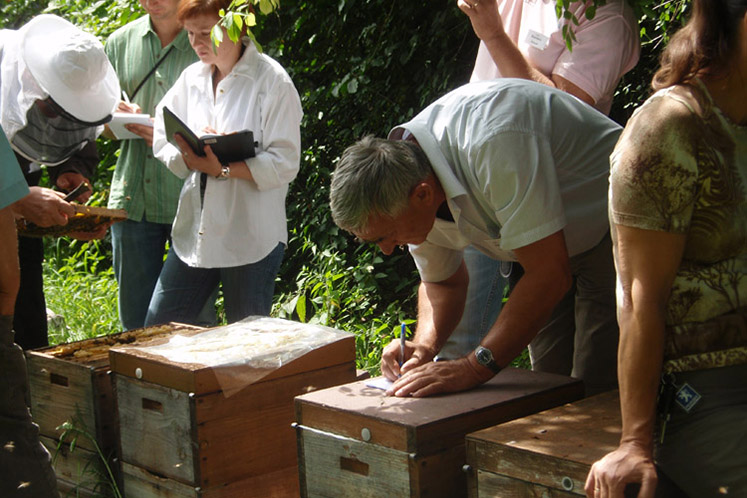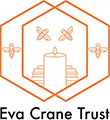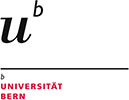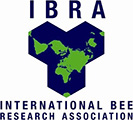The Pan-European Genotype-Environment-Interactions Experiment
An international experiment to estimate the importance of genotype-environment interactions on vitality and performance of honey bees and colony losses was run between 2009 and 2012. The experiment included 621 starting colonies from 16 different genetic origins belonging to 5 Apis mellifera subspecies (carnica, ligustica, macedonica, mellifera, siciliana). It took place in 21 beeyards, managed by 15 COLOSS partners in 11 European countries, ranging from Scandinavia to the Mediterranean, and across Central Europe to the Balkans.
At each location, the local strain of bees was tested together with at least two “foreign??? origins. The common test protocol (Costa et al., 2012) took into account colony survival and development, productive and behavioural traits and presence and prevalence of pests and pathogens. No chemical treatments against varroa or other diseases were applied during the experiment.
Data collection was performed according to uniform methods which were developed and constantly discussed during regular meetings and training sessions in a productive and friendly atmosphere, which were possible thanks to funding by COST Action FA0804. Throughout the experiment partners were frequently in contact for exchange of opinions and for local adaptation of the management techniques.
The complete results relating to survival, behaviour, development, diseases, and genetic discrimination, can be found in several articles of a Special Issue of the Journal of Apicultural Research. As well as providing insights into the complex mechanisms of adaptation and the relative importance of environment and genetic origin on colony vitality, the data collected in this experiment also permitted a preliminary view of disease presence in several European countries.
Overall, this experiment showed that it is worthwhile to continue work towards conservation of locally adapted honey bee populations.
Peer-reviewed articles
- Costa C., Büchler R., Berg S., Bienkowska M., Bouga M., Bubalo D, Charistos L., Le Conte Y., Drazic M., Dyrba W., Fillipi J., Hatjina F., Ivanova E., Kezic N, Kiprjanovska H., Kokinis M., Korpela S., Kryger P., Lodesani M., Meixner M., Panasiuk B., Pechhacker H., Petrov P., Oliveri E., Ruottinen L., Uzunov A., Vaccari G., and Wilde J. 2012. A Europe-wide experiment for assessing the impact of genotype-environment interactions on the vitality of honey bee colonies: methodology. J. Apic. Sci. 56:147-158. [degruyter]
- Meixner, M. D., R. Buchler, C. Costa, R. M. Francis, F. Hatjina, P. Kryger, A. Uzunov, and N. L. Carreck. 2014. Honey bee genotypes and the environment. J. Apic. Res. 53:183-187. [tandfonline]
- Francis, R. M., P. Kryger, M. Meixner, M. Bouga, E. Ivanova, S. Andonov, S. Berg, M. Bienkowska, R. Buchler, L. Charistos, C. Costa, W. Dyrba, F. Hatjina, B. Panasiuk, H. Pechhacker, N. Kezic, S. Korpela, Y. Le Conte, A. Uzunov, and J. Wilde. 2014. The genetic origin of honey bee colonies used in the COLOSS Genotype-Environment Interactions Experiment: a comparison of methods. J. Apic. Res. 53:188-204. [tandfonline]
- Buchler, R., C. Costa, F. Hatjina, S. Andonov, M. D. Meixner, Y. Le Conte, A. Uzunov, S. Berg, M. Bienkowska, M. Bouga, M. Drazic, W. Dyrba, P. Kryger, B. Panasiuk, H. Pechhacker, P. Petrov, N. Kezic, S. Korpela, and J. Wilde. 2014. The influence of genetic origin and its interaction with environmental effects on the survival of Apis mellifera L. colonies in Europe. J. Apic. Res. 53:205-214. [tandfonline]
- Meixner, M. D., R. M. Francis, A. Gajda, P. Kryger, S. Andonov, A. Uzunov, G. Topolska, C. Costa, E. Amiri, S. Berg, M. Bienkowska, M. Bouga, R. Buchler, W. Dyrba, K. Gurgulova, F. Hatjina, E. Ivanova, M. Janes, N. Kezic, S. Korpela, Y. Le Conte, B. Panasiuk, H. Pechhacker, G. Tsoktouridis, G. Vaccari, and J. Wilde. 2014. Occurrence of parasites and pathogens in honey bee colonies used in a European genotype-environment interactions experiment. J. Apic. Res. 53:215-229. [tandfonline]
- Francis, R. M., E. Amiri, M. D. Meixner, P. Kryger, A. Gajda, S. Andonov, A. Uzunov, G. Topolska, L. Charistos, C. Costa, S. Berg, M. Bienkowska, M. Bouga, R. Buchler, W. Dyrba, F. Hatjina, E. Ivanova, N. Kezic, S. Korpela, Y. Le Conte, B. Panasiuk, H. Pechhacker, G. Tsoktouridis, and J. Wilde. 2014. Effect of genotype and environment on parasite and pathogen levels in one apiary – a case study. J. Apic. Res. 53:230-232. [tandfonline]
- Hatjina, F., C. Costa, R. Buchler, A. Uzunov, M. Drazic, J. Filipi, L. Charistos, L. Ruottinen, S. Andonov, M. D. Meixner, M. Bienkowska, G. Dariusz, B. Panasiuk, Y. Le Conte, J. Wilde, S. Berg, M. Bouga, W. Dyrba, H. Kiprijanovska, S. Korpela, P. Kryger, M. Lodesani, H. Pechhacker, P. Petrov, and N. Kezic. 2014. Population dynamics of European honey bee genotypes under different environmental conditions. J. Apic. Res. 53:233-247. [tandfonline]
- Uzunov, A., C. Costa, B. Panasiuk, M. Meixner, P. Kryger, F. Hatjina, M. Bouga, S. Andonov, M. Bienkowska, Y. Le Conte, J. Wilde, D. Gerula, H. Kiprijanovska, J. Filipi, P. Petrov, L. Ruottinen, H. Pechhacker, S. Berg, W. Dyrba, E. Ivanova, and R. Buchler. 2014. Swarming, defensive and hygienic behaviour in honey bee colonies of different genetic origin in a pan-European experiment. J. Apic. Res. 53:248-260. [tandfonline]




